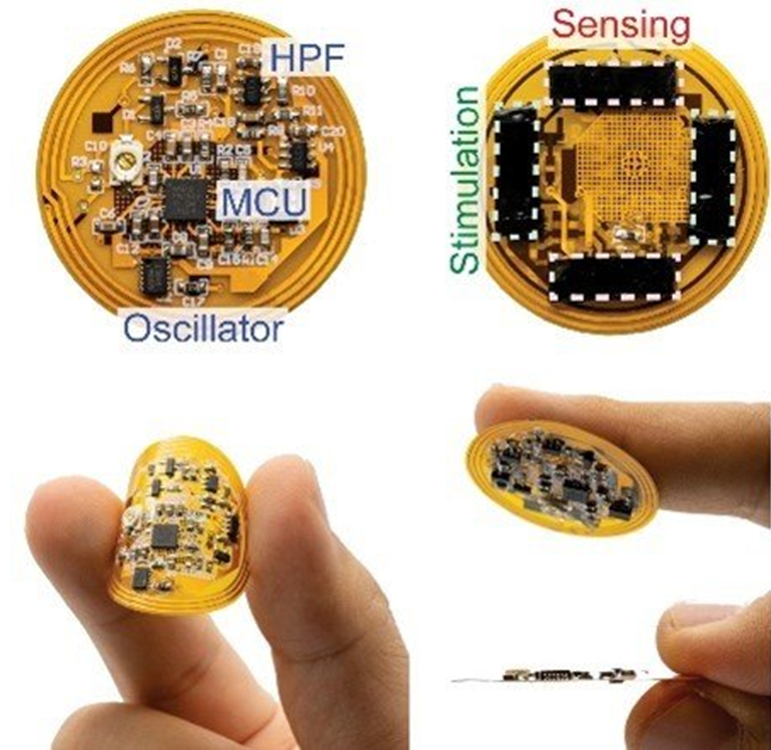Innovative Smart Bandages: Revolutionizing Wound Healing
Written on
Chapter 1: The Rise of Wearable Health Technology
In today's technology-driven world, wearable devices are becoming increasingly prevalent. Beyond their aesthetic appeal, these gadgets hold significant potential, particularly in healthcare. For instance, back in 2020, I explored the concept of “drawn-on-skin” (DoS) electronics, which function as self-monitoring health tools. In 2021, I highlighted a compact skin patch with similar functionalities. These advancements underscore the challenges of treating chronic wounds, which often linger for months, causing psychological distress and even posing life-threatening risks. Factors such as infections, diabetes, and weakened immune systems exacerbate these issues.
Researchers at Stanford University have taken on the challenge of chronic wound treatment by developing a groundbreaking wireless smart bandage. This innovative device has been shown to enhance the healing process by continuously monitoring and addressing wounds. It facilitates quicker wound closure, boosts blood circulation to damaged tissues, and minimizes scar formation during recovery.

“In sealing the wound, the smart bandage protects as it heals. But it is not a passive tool. It is an active healing device that could transform the standard of care in the treatment of chronic wounds.”
~ Yuanwen Jiang, Co-First Author of the Study
Chapter 2: How the Smart Bandage Works
The smart bandage is equipped with sophisticated circuitry featuring impedance and temperature sensors that track the healing process. If the sensors identify inadequate healing or signs of infection, they alert the central processing unit to increase electrical stimulation applied to the wound. This mechanism aids in accelerating tissue closure and reducing infection risks. Users can monitor sensor data in real-time via a smartphone, all wirelessly.
The electronic component of the bandage includes a microcontroller unit (MCU), radio antenna, memory, and other essential parts, all incredibly thin at just 100 microns—about the thickness of a single coat of paint. This electronic layer is affixed atop a unique hydrogel, a flexible polymer designed to deliver healing electrical stimulation while simultaneously gathering biosensor data.

The hydrogel is engineered to securely adhere to the wound when necessary, yet can be easily removed by slightly warming it (to around 40°C/104°F) without damaging the tissue. Researchers believe this active engagement in the healing process is the device's most significant advantage.
Through the established technique of electrical stimulation, known as galvanotaxis, the researchers aim to accelerate tissue regeneration and repair. This method has been shown to enhance keratinocyte movement to the wound area, limit bacterial infections, and prevent biofilm formation.

The smart bandage's biosensing capabilities enable it to monitor the wound's physical environment, providing a precise and real-time assessment of the healing condition. It can detect variations in skin conductivity and temperature, which change as healing progresses. Specifically, as inflammation subsides, electrical impedance increases, and local temperatures decrease.
Section 2.1: Research Findings and Future Prospects
Through their research, the team discovered that electrical stimulation activated pro-regenerative genes Selenop and Apoe, which facilitate pathogen elimination and support tissue repair, respectively. Additionally, electrical stimulation boosted white blood cell populations, crucial for healing.
Although this study serves as proof of concept, it shows great promise. Challenges remain before this technology can be utilized commercially, including scaling the device for human use, reducing production costs, and addressing long-term data storage issues. The team also aims to integrate additional sensors to measure metabolites, biomarkers, and pH levels, further enhancing the bandage's utility.
The first video titled "First bioresorbable electronic bandage speeds healing by 30% - YouTube" illustrates how a bioresorbable electronic bandage can significantly accelerate healing processes, showcasing the future of wound care technology.
The second video, "New 'smart bandages' for the treatment of chronic wounds - YouTube," explores innovative smart bandages designed for chronic wound care, emphasizing their potential to transform patient outcomes.
Complete research findings were published in the Journal of Nature Biotechnology.